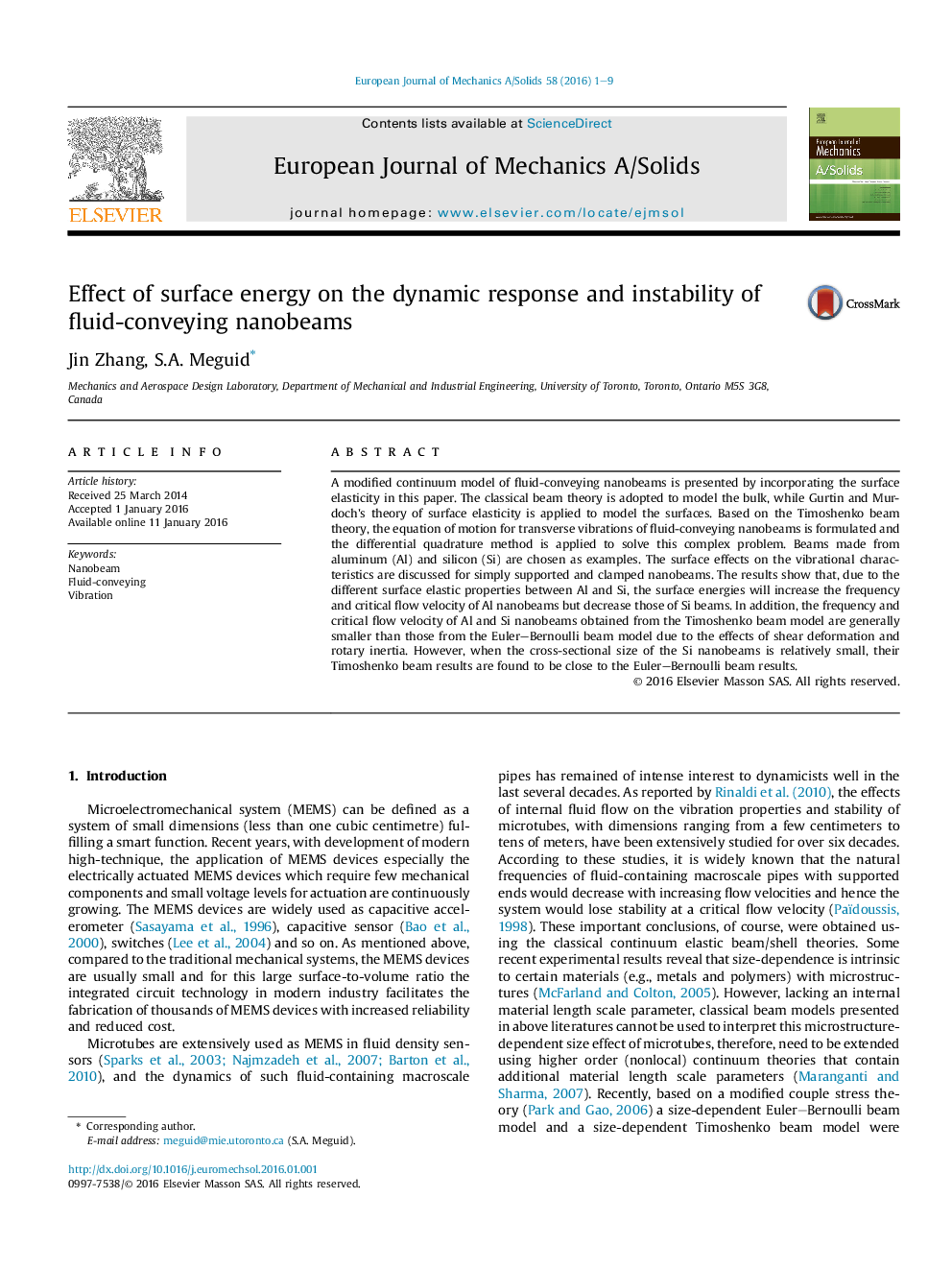| Article ID | Journal | Published Year | Pages | File Type |
|---|---|---|---|---|
| 777946 | European Journal of Mechanics - A/Solids | 2016 | 9 Pages |
•A modified Timoshenko nanoscale beam conveying fluid is presented.•Surface effects on the natural frequencies and the critical flow velocities are discussed.•The influences of shear deformation and rotary inertia on the natural frequencies and the critical flow velocities are discussed.•Surface energies affect the results through the presence of some intrinsic length scales.
A modified continuum model of fluid-conveying nanobeams is presented by incorporating the surface elasticity in this paper. The classical beam theory is adopted to model the bulk, while Gurtin and Murdoch's theory of surface elasticity is applied to model the surfaces. Based on the Timoshenko beam theory, the equation of motion for transverse vibrations of fluid-conveying nanobeams is formulated and the differential quadrature method is applied to solve this complex problem. Beams made from aluminum (Al) and silicon (Si) are chosen as examples. The surface effects on the vibrational characteristics are discussed for simply supported and clamped nanobeams. The results show that, due to the different surface elastic properties between Al and Si, the surface energies will increase the frequency and critical flow velocity of Al nanobeams but decrease those of Si beams. In addition, the frequency and critical flow velocity of Al and Si nanobeams obtained from the Timoshenko beam model are generally smaller than those from the Euler–Bernoulli beam model due to the effects of shear deformation and rotary inertia. However, when the cross-sectional size of the Si nanobeams is relatively small, their Timoshenko beam results are found to be close to the Euler–Bernoulli beam results.
